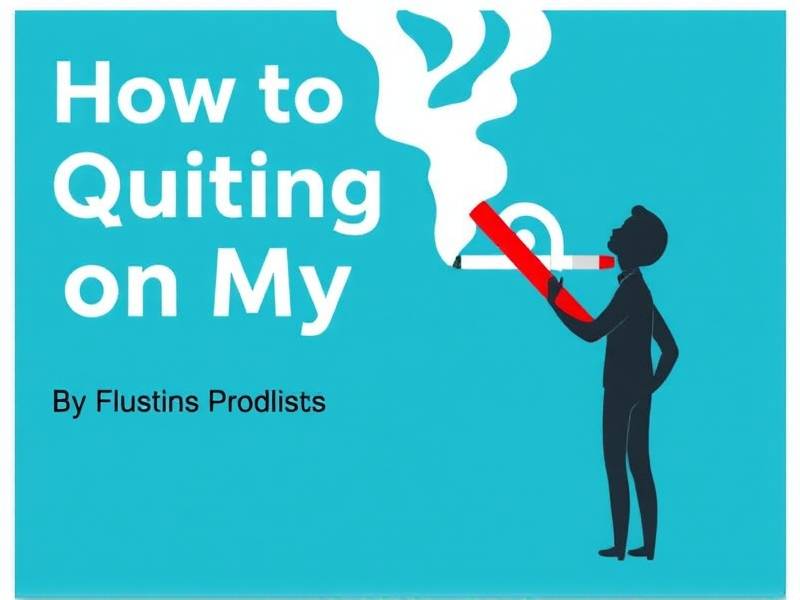How to Quit Smoking on My Own: Effective Strategies and Tips
How to Quit Smoking on Your Own: Effective Strategies and Tips
Introduction: Smoking is a prevalent habit that poses significant health risks. Whether you're looking to improve your overall well-being or reduce the risk of developing smoking-related diseases, quitting smoking is a crucial step. While seeking professional help can be beneficial, many individuals prefer taking matters into their own hands. In this article, we will explore effective strategies and tips for quitting smoking on your own.
-
Set Clear Goals Before embarking on your journey to quit smoking, it's essential to set clear and achievable goals. Determine why you want to quit and how you envision your life without cigarettes. This will serve as a powerful motivator throughout the process.

-
Create a Quit Plan Developing a quit plan can significantly increase your chances of success. Start by selecting a quit date and consider the following elements:
a. Gradual vs. Cold Turkey: Decide whether you prefer gradually reducing your cigarette consumption or quitting cold turkey. b. Identify Triggers: Recognize situations or emotions that trigger your urge to smoke and plan how to cope with them. c. Support System: Build a support system consisting of friends, family, or support groups who can offer encouragement and guidance.
- Replace Smoking with Healthy Habits Quitting smoking involves finding alternative activities to replace the urge to smoke. Consider the following options:
a. Physical Exercise: Engage in regular physical activity such as walking, jogging, or yoga. b. Healthy Snacks: Opt for nutritious snacks like fruits, vegetables, or nuts instead of reaching for cigarettes. c. Relaxation Techniques: Practice relaxation techniques like deep breathing exercises or meditation to manage stress.
- Manage Withdrawal Symptoms Quitting smoking often comes with withdrawal symptoms such as cravings, irritability, and anxiety. Here are some strategies to help manage these symptoms:
a. Nicotine Replacement Therapy (NRT): Consider using NRT products like nicotine gum, lozenges, or patches. b. Medications: Consult with a healthcare professional about prescription medications that can aid in quitting smoking. c. Distraction Techniques: Keep yourself occupied with hobbies, reading books, or engaging in other activities that divert your attention from cravings.

-
Seek Support from Online Resources Utilize online resources such as forums, websites dedicated to quitting smoking, and mobile applications designed specifically for this purpose. These platforms offer valuable advice from individuals who have successfully quit smoking and provide access to tools that can aid in your journey.
-
Stay Positive and Persistent Quitting smoking is challenging; however, maintaining a positive mindset is crucial for success. Celebrate small victories along the way and remember that every attempt brings you closer to achieving your goal.
Conclusion: Quitting smoking on your own requires determination, commitment, and effective strategies tailored to your individual needs. By setting clear goals, creating a quit plan, managing withdrawal symptoms, seeking support from online resources, and staying positive throughout the process, you can increase your chances of successfully breaking free from this harmful habit once and for all.
Remember that it's never too late to start anew – take control of your health today!
